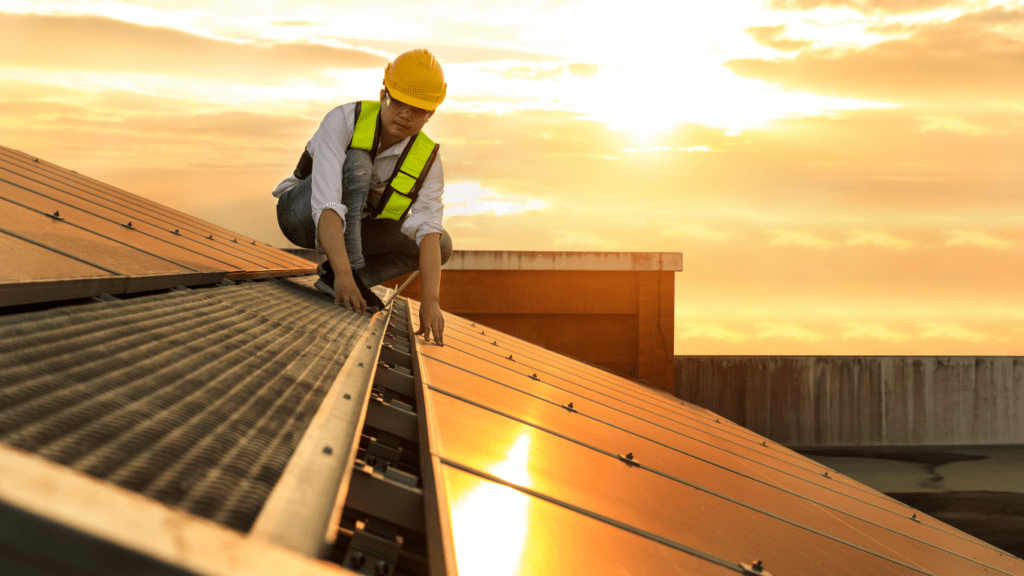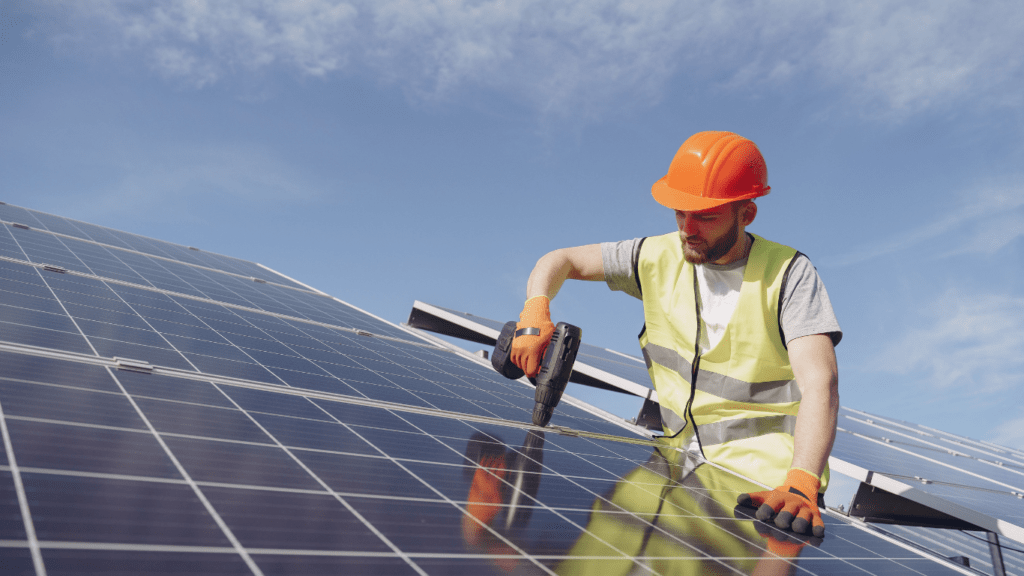Curious about harnessing solar power for your home? In my latest guide, I’ll walk you through the exciting world of DIY solar panel installation. It’s easier than you think to embrace renewable energy and reduce your carbon footprint. With a few simple steps, you can start generating your electricity and saving on utility bills. Ready to take the leap into sustainable living? Let’s dive in and explore the possibilities of solar energy for your home.
Evaluating Your Home for Solar Panel Installation
When considering solar panel installation, it’s essential to assess your home thoroughly to ensure optimal efficiency. Here are key factors to consider:
Assessing Roof Condition and Orientation
Inspecting your roof is crucial before installing solar panels. Check for any damage, shading from nearby trees or structures, and the available space for panel placement. Additionally, the orientation of your roof towards the sun plays a significant role in energy production. South-facing roofs receive the most sunlight throughout the day, making them ideal for solar installations.
Understanding Your Energy Needs
To determine the right solar panel system for your home, understanding your energy requirements is vital. Analyze your past electricity bills to gauge your average consumption. Consider factors like seasonal variations and any planned lifestyle changes that may affect your energy usage. This assessment helps in sizing the solar panel system to meet your specific needs efficiently.
Choosing the Right Solar Panels
When selecting solar panels for your home, it’s crucial to consider various factors to ensure optimal performance and efficiency. Here’s what you need to know:
Types of Solar Panels
When it comes to choosing solar panels for your DIY installation, you’ll encounter different types, each with its unique characteristics. The main types of solar panels include:
- Monocrystalline Solar Panels: These are known for their high efficiency and sleek appearance. They perform well in limited space and offer a longer lifespan.
- Polycrystalline Solar Panels: These are cost-effective options with slightly lower efficiency compared to monocrystalline panels. They are a popular choice for residential installations.
- Thin-Film Solar Panels: These lightweight panels are flexible and suitable for irregular surfaces. While less efficient, they can be a good option for certain installations.
Considering the available space, budget, and efficiency requirements can help you determine the most suitable type of solar panel for your home.
Factors Affecting Solar Panel Efficiency
Several factors can impact the efficiency of solar panels in generating electricity. It’s essential to take the following into account:
- Orientation: The direction your solar panels face can significantly affect their performance. Panels facing south generally receive the most sunlight throughout the day.
- Tilt Angle: The tilt angle of your solar panels should be optimized based on your geographical location to maximize sunlight exposure.
- Shading: Any form of shading on solar panels, such as trees or nearby buildings, can reduce their efficiency. Ensuring panels are placed in a shaded-free area is crucial.
- Temperature: High temperatures can decrease the efficiency of solar panels. Proper ventilation and spacing between panels can help mitigate this issue.
By considering these factors when choosing and installing solar panels, you can ensure you’re maximizing the energy output of your solar power system.
DIY Solar Panel Installation Steps
I’ll guide you through the essential steps to successfully install solar panels on your home. Let’s start by ensuring you have the necessary tools and equipment before starting the installation process.
Preparing Installation Tools and Equipment
To begin the installation process, gather the following tools and equipment:
- Solar panels
- Mounting hardware
- Drill with bits
- Ladder
- Wrench set
- Screwdriver
- Solar panel racking system
- Safety equipment (gloves, goggles, etc.)
Make sure to have all the items ready to streamline the installation process and ensure a safe working environment.
Mounting the Solar Panels
Next, it’s time to mount the solar panels on your roof. Follow these steps carefully:
- Determine the best location on your roof for maximum sunlight exposure.
- Install the racking system securely on your roof using appropriate mounting hardware.
- Attach the solar panels to the racking system as per the manufacturer’s instructions.
- Check the alignment and elevation of the panels to optimize energy capture.
Proper mounting is crucial for the efficiency and longevity of your solar panel system.
Wiring and Connections
Once the panels are securely mounted, it’s time to connect them to your home’s electrical system. Here’s how to complete the wiring and connections:
- Install a junction box near the panels to connect the wiring.
- Run the wires from the panels to the junction box following electrical codes and safety standards.
- Connect the wires from the solar panels to an inverter that converts the DC energy into usable AC power.
- Connect the inverter to your home’s electrical panel to start utilizing solar energy.
Carefully follow all safety protocols and guidelines while making electrical connections to ensure a safe and functional solar panel system.
Legal and Safety Considerations
When it comes to DIY solar panel installation for your home, there are key legal and safety considerations to keep in mind. Ensuring compliance with permits and regulations, as well as prioritizing safety measures, is crucial throughout the installation process to avoid any issues down the line.
Permits and Regulations
I recommend researching and acquiring all necessary permits and complying with local regulations before starting your DIY solar panel installation. Check with your local government or utility company for specific requirements related to solar panel installations in your area. Adhering to these regulations not only keeps you on the right side of the law but also ensures the safety and efficiency of your solar panel system.
Safety Tips for DIY Installers
Safety should always be a top priority when installing solar panels on your home. Here are some essential safety tips for DIY installers:
- Before beginning the installation, turn off the power supply to avoid any electrical accidents.
- Use proper safety gear such as gloves, safety glasses, and a hard hat to protect yourself during the installation process.
- Work with a partner when handling heavy solar panels or working at heights to prevent accidents.
- Follow the manufacturer’s instructions carefully to ensure the panels are installed correctly and securely.
- In case of any uncertainty or if you encounter any issues during the installation, don’t hesitate to seek professional help to avoid safety hazards.
By following these safety tips and guidelines, you can ensure a smooth and secure DIY solar panel installation process for your home.
Maintenance and Troubleshooting
When it comes to maintaining your DIY solar panel system, there are a few key routine tasks that can help ensure its efficiency and longevity. Here are some essential tips to keep your system running smoothly:
Routine Maintenance Tips
Inspect Panels Regularly:
- Check your solar panels routinely for any debris, dirt, or shading that might affect their performance.
- Ensure that the panels are clean and free from any obstructions to maximize sunlight absorption.
Monitor System Performance:
- Keep track of your system’s energy production to identify any unusual drops in output.
- Look out for any error messages on your monitoring system that could indicate potential issues.
Trim Surrounding Trees and Foliage:
- Trim overhanging branches or foliage that could cast shadows on your solar panels.
- Maintain a clear path for sunlight to reach your panels throughout the day.
Check for System Leaks:
- Inspect the racking and mounting system for any signs of water leaks or rust.
- Address any leaks promptly to prevent damage to your panels and the roof.
Schedule Professional Inspections:
- Arrange for annual inspections by a qualified solar technician to assess the overall condition of your system.
- A professional inspection can help detect potential issues early and ensure optimal performance.
Inverter Failure:
- Issue: Inverter failure can disrupt the energy conversion process and lead to a drop in energy production.
- Solution: Contact a solar technician to diagnose the issue and repair or replace the inverter as needed.
Panel Hotspots:
- Issue: Hotspots on solar panels can indicate cell damage or electrical issues, impacting overall system efficiency.
- Solution: Address hotspots promptly by identifying and replacing the affected panels to prevent further damage.
Battery Issues:
- Issue: Issues with solar batteries can cause energy storage problems and affect system performance during low sunlight periods.
- Solution: Consult with a professional to assess battery health and consider repair or replacement options to maintain optimal storage capacity.
Connection Problems:
- Issue: Loose or faulty connections can disrupt energy flow within the system, leading to performance issues.
- Solution: Inspect all connections regularly and tighten or replace any damaged connectors to ensure seamless energy transfer.
By following these maintenance tips and being aware of common issues, you can proactively care for your DIY solar panel system and address any potential issues promptly to ensure optimal performance and energy savings.

 Jameser Knowlesicker is the visionary founder of the project, passionately advocating for urban agriculture and sustainability. His commitment to transforming city landscapes into vibrant green spaces led him to create a platform that disseminates the latest news and trends in urban farming. Jameser focuses on promoting eco-friendly practices and products, emphasizing the health benefits of growing one’s own food. Under his leadership, the project has become a vital resource for urban gardeners and sustainability enthusiasts, inspiring collective efforts to foster environmental sustainability and enhance urban life.
Jameser Knowlesicker is the visionary founder of the project, passionately advocating for urban agriculture and sustainability. His commitment to transforming city landscapes into vibrant green spaces led him to create a platform that disseminates the latest news and trends in urban farming. Jameser focuses on promoting eco-friendly practices and products, emphasizing the health benefits of growing one’s own food. Under his leadership, the project has become a vital resource for urban gardeners and sustainability enthusiasts, inspiring collective efforts to foster environmental sustainability and enhance urban life.